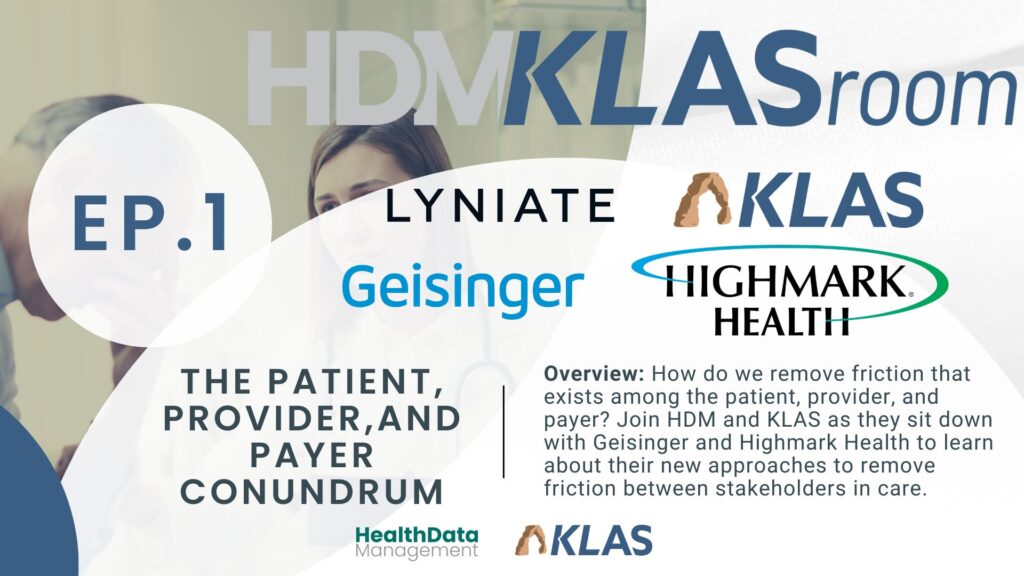HDM CLASSroom: The Patient, Provider, and Payer Conundrum – EPISODE 1
Featuring Geisinger, Highmark Health, Lyniate, and KLAS Research.

SESSION 1: Payers, providers and patients under one roof - Part 1
ON DEMAND RECORDING
Subject Matter Experts
SESSION 2: Removing friction between payers, providers and patients by focusing on the person first...is that scalable?
ON DEMAND RECORDING
Subject Matter Experts
Supporting Content
Download this guide, Know Your People, for actionable tips on how to strengthen your data foundation with more accurate identity data. You’ll learn how accurate identity data can give you a competitive advantage and:
- • Deliver a more personal experience
- • Boost patient safety
- • Advance health equity
- • Succeed with value-based care
- • Support public health initiatives
- • Aggregate and activate data
- • Keep people coming back
Be a Champion for Healthy Data
This guide frames the stakes for healthy data (including identity and clinical terminology data) in three key initiatives that are nearly universal across healthcare organizations of all shapes and sizes:
- • Improving patient data quality and analytics
- • Enabling a better patient experience
- • Supporting improved financial outcomes
How does an EMPI work to improve patient outcomes and increase revenue?
With an enterprise person master index (EMPI), healthcare organizations can significantly reduce duplicate patient records and correct errors in patient demographic information. This blog answers:
- • What is an EMPI and how does it work?
- • Why do healthcare organizations need EMPIs?
- • How does an EMPI improve patient records?
- • How does an EMPI increase revenue for healthcare organizations?
Healthy Data, Healthy People, panel discussion
Speakers at the Healthy Data. Healthy People. panel discuss the importance of data quality in supporting healthier outcomes. Panelists talked about how interoperability solutions can reduce clinician burden, support cybersecurity, and support data quality improvements in all types of healthcare organizations. Learn from:
- • Kim Chaundy, AVP, applications and interoperability, Geisinger
- • Mike Noshay, co-founder and chief strategy & marketing officer, Verinovum
- • Naresh Sundar Rajan, chief data officer, CyncHealth
- • Paul Viskovich, CEO, Healthfully
- • Mark Ralph, manager, technology and HIE, Nova Scotia Health Authority
- • Chris Notaro, co-founder and CEO, Untangle Health, moderated the discussion.
How do I know if my organization needs HealthTerm?
To achieve a high level of interoperability, high-quality clinical information, and accurate analytics, all data sent by or received into a healthcare ecosystem should be mapped to a recognized standard. This data sheet lists simple questions to assess how your organization can use terminology solutions from Lyniate. It covers considerations such as the organizational impacts of:
- • Data quality
- • Non-standard codes
- • Legacy data
- • Sensitive data filtering
- • Analytics for quality measures and reporting
- • FHIR implementation